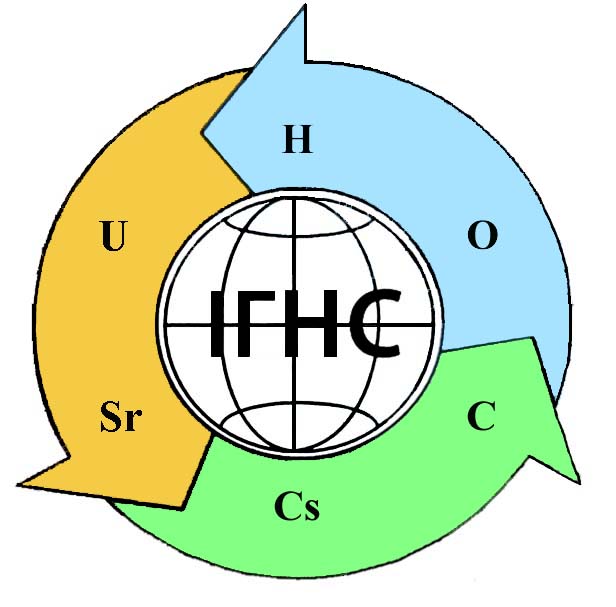DEVELOPMENT OF A WATER AND ECOLOGICAL EMERGENCY FROM MINE FLOODING OF STEBNYK POTASSIUM DEPOSIT OWING TO NATURAL AND TECHNOGENIC FACTORS
DOI:
https://doi.org/10.32782/geotech2022.35.09Keywords:
mine, mine workings, rock, horizon, mineral, mineralization, potassium salts, brines, disintegration of interchamber pillars, karst failureAbstract
Water and environmental problems are caused by the systematic inflow of unsaturated drainage waters and low-mineralized brines into the mine No 2 of the Stebnyk potash deposit. Filling the mine workings with unsaturated brines caused the risk of losing the stability of the interchamber pillars and ceilings in the spent chambers, rock separation, intensification of karst-breaking processes. The paper analyzes the development of the ecological emergency in chronological terms. Hydrogeological, hydrochemical, seismic and geophysical data of monitoring, visual and instrumental observation of the deformation of the earth's surface were used to solve the set tasks. The dynamics of flooding of the mine № 2 was analyzed. In the mining massif of mine No 2, the decompaction of rocks along the formation 10 in the Northern-Eastern direction towards the spent chamber 115 was recorded, the infiltration supply zone, the transportation zone and the groundwater discharge zone were established. The presence of intensive filtration of surface waters in the massif of rocks indicates the process of karst formation, which is confirmed by the inflow of formation waters into the mine workings and the decomposition of interchamber pillars. The zone of decompaction extends towards the mine, where the development of karst is maximum. The destruction of the inter-chamber columns and the ceiling led to a significant increase in the level of brine in the chambers of the second horizon at the end of 2014. It is estimated that the volume of broken pillars is ~ 473,540 m3. The correlation between the long uncontrolled growth of increase in the amount of unsaturated drainage water in the mining area in 1978-2013 and the formation of karst dips over the spent chambers of the first horizon was found. There was a breakthrough of supersalt low-mineralized aggressive waters to this horizon in October 1978.
References
Varlamov, A.A., Kozlov, S.S., Lipnitsky, V.K., Khodkov, A.E. (1971), Hydrogeological conditions of the Stebnyk deposit of potassium salts, Mat. in hydrogeology and geology the role of groundwater, Leningrad: Izd-vo LGU, pp. 124-132.
Gaidin A.M., Dyakov V.O. (2010), Geodynamic processes in salt deposits, Materials. International scientific-practical conference "Miners' Forum 2010". Dnepropetrovsk, pp. 23-41.
Dudko P.M. (1972), Underground salt leaching.
Moscow: Nedra.
Dyakiv V.O., Hevpa Z.Z., Dranovska A.V. (2018), Failure on September 30 2017 over the mine № 2 Stebnyk Mining and Chemical Enterprise "Polymineral": causes, consequences and current state (according to the results of material balance modeling and monitoring observations), Fifth International Scientific and Practical Conference "Subsoil Use Investment Prospects "Ukraine, Conference Proceedings, Volume 1, Truskavets, pp. 103-116.
Dyakiv V.O., Hevpa Z.Z., Kovalchuk M.M. (2019), Geoecological characteristics and hydrochemical composition of karst lake strata formed at the site of failure № 27 above mine № 2 Stebnyk Mining and Chemical Enterprise "Polymineral", Sixth International Scientific and Practical Conference "Subsoil Use in Ukraine. Prospects for Investment" Ukraine Conference, Volume 2, Truskavets, pp. 215-222.
Dyakiv V.O., Hevpa Z.Z., Dranovska A.V. (2021), The current state of the mine № 2 Stebnyk HCP "Polymineral" and its impact on the karstological situation (based on monitoring observations, experimental and material-balance modeling), Seventh International Scientific and Practical Conference "Subsoil Use in Ukraine. Prospects for Investment Ukraine" Conference, Volume 2, Lviv, pp. 169-181.
Zilberschmidt V.G., Zilberschmidt V.V., Kaimark O.B. (1992), Destruction of salt rocks. M.: Nauka, p. 144.
Korenevsky S.M., Donchenko K.B. (1963), Geology and conditions of formation of potassium deposits of the Soviet Precarpathians, Geology of deposits of potassium salts:
Tr. EVERYTHING. New ser. T. 99. pp. 3-152.
Kuzmenko E.D., Shtogrin M.V., Lushchik O.V., Shvirlo M.I., Anikeev S.G., Vdovina O.P., Shtogrin L.V. (1999), Report on research work Ecology – geophysical research in the Western region of Ukraine to trace the development of natural and man-made karst and related processes, IFDTUNG. pp. 22-102.
Kuzmenko E.D., Bagriy S.M., Chepurny I.V., Shtogrin M.V. (2017), Estimation of the risk of near-surface deformations of rocks within the Stebnyk potassium deposit by the method of PIEMPZ, Geodynamics. № 1 (22), pp. 98-113.
Maksimovich G.A. (1963), Fundamentals of karstology, Perm. T. 1.
Semchuk Ya.M. (2001), Man-caused disturbance of the geological environment in the areas of development of potash deposits. Coal of Ukraine. № 9 (537), pp. 41-45.









